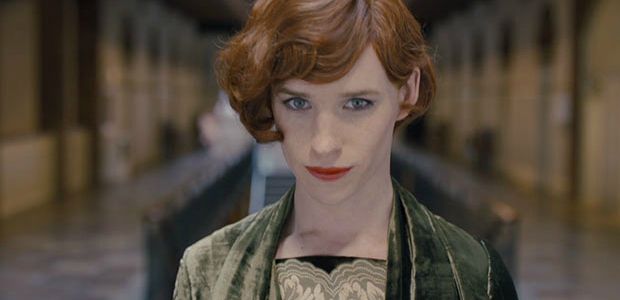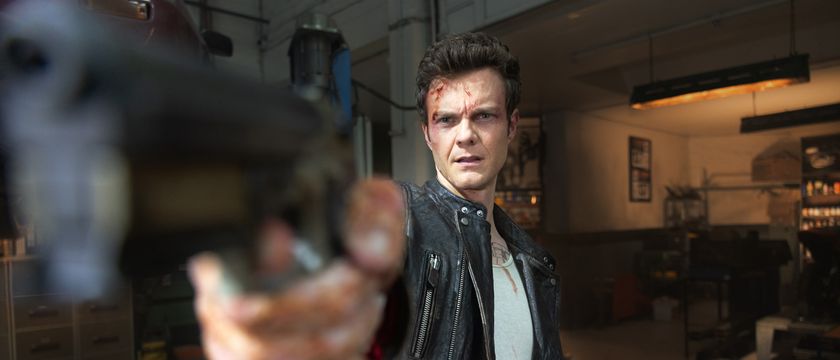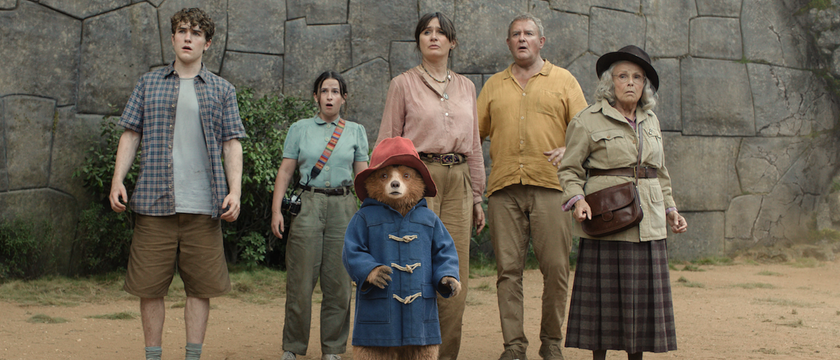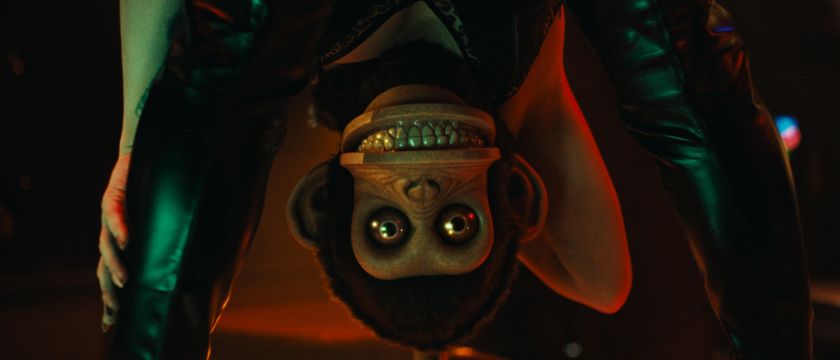To which girl is the title of Tom Hooper's delicate The Danish Girl actually referring?
Most coming to Hooper's biopic of pioneering transgender Einar Wegener likely are enticed by the transformation of Oscar-winning Eddie Redmayne (The Theory of Everything) from fey male painter into semi-confident female model, Lili Elbe -- who Einar realizes has been resting inside him all along. And Redmayne's transformation, and on-screen portrayal of Lil in particular, is every bit as astounding as his morph into genius Stephen Hawking was in Theory. For those who track that sort of thing (and yes, I'm one of them), Oscar attention should follow Redmayne as more begin to see The Danish Girl.
But it shouldn't be limited to Redmayne, alone. For just as many, if not more, will leave The Danish Girl raving about the soul-bearing emotional performance by Alicia Vikander, who gently wrestles Hooper's movie away from her male co-star and -- with Hooper's assistance, actually -- makes The Danish Girl as much a movie about her character, Gerda Wegener's journey, as much as it is about Einar's transformation into Lili.
It isn't easy on either of them. Beginning in Copenhagen circa 1926, Einar and Gerda are successful painters, though his landscapes receive more acclaim than her portraits. It is suggested that Einar has encountered feelings of confusion over his sexuality prior to when we meet him, but Hooper uses a specific event as a gateway into his identity crisis. One afternoon, needing to finish a half-done portrait of a gracefully beautiful dancer, Gerda asks Einar to slip into stockings and women's shoes. She places a lace dress over her already fey husband, and the light that shines behind the man's eyes grows brighter. They are artists. There is a legitimate excuse for this pantomime. And there is a delicate and beautiful way that Hooper conveys this awakening in Einar through the touch and feel of dainty fabrics. Gerda and an artist friend, Oola Paulson (Amber Heard), go so far as to dub Einar's female face Lili. They don't yet understand what they have given birth to.
The Danish Girl, from here, follows Einar's complicated efforts to shed his identity as Einar and fully embrace Lili. At first, Gerda goes along with the ruse. She helps her husband masquerade as his dual identity, who they introduce as Einar's cousin, so that he can attend parties and understand how a female is observed. Gerda also begins to sketch Lili -- and her revelation does wonders for Gerda's stalled professional career. Suddenly, Parisian galleries are eager to sponsor her, and everyone wants to know more about the stunningly beautiful but delicate and shy model. There's a lot to be said in The Danish Girl about how the body can be viewed as a canvas for expressing one's inner truths. Lili unlocks waves of emotions in both Einar and Gerda, and there are beautiful scenes of Redmayne posing in front of a mirror, exploring the body he has been given, and wondering if it's possible to achieve the body he would prefer.
There is a way, actually, and the second half of The Danish Girl follows Einar's path to experimental gender-reassignment surgery, and the complications it brings to his marriage, his health, and his life. Lucinda Coxon's screenplay raises several interesting threads about what happens to identity when an individual chooses to leave part of his or her life behind -- and also what happens to the people who were caught up in the wake of the conflicted party. Lili tells Gerda that Einar is dead. It's not really that simple, though, is it?
Tom Hooper, as expected, conjures stately compositions and makes beautiful use of both Copenhagen and Paris. He continues to show an incredible eye for period detail, and even learns how to pull his lens away from the deadly close ups that made his Les Miserables feel claustrophobic. But his voice is... detached? The Danish Girl plays more like an historical account of a groundbreaking life, rather than an intimate, emotionally charged and passionate exercise, which Lili deserved. It's staid, and it's safe, and it views the complicated proceedings through a pane of glass that we can't see, but we definitely can feel.
Whenever Danish Girl punctures through, it's because of the first-rate performances by Eddie Redmayne and Alicia Vikander, with the latter wringing incredible tension, frustration, anger, love and loss out of Gerda's predicament. Einar's conflict absolutely pulls at your heartstrings, but he makes the difficult choice to leave one life behind and embrace another. Gerda can't choose. She has to play with the hand that she has been dealt, and in that painful truth, Vikander unearths a beautiful and memorable turn.

Sean O’Connell is a journalist and CinemaBlend’s Managing Editor. Having been with the site since 2011, Sean interviewed myriad directors, actors and producers, and created ReelBlend, which he proudly cohosts with Jake Hamilton and Kevin McCarthy. And he's the author of RELEASE THE SNYDER CUT, the Spider-Man history book WITH GREAT POWER, and an upcoming book about Bruce Willis.

John Wick 5 Just Got An Update From A Lionsgate Exec, And Now I’m Even More Confused About What’s Happening With Keanu Reeves’ Character

‘I Was Going Crazy For 3 Days.’ Robert Pattinson Says His Movie With Zendaya Was Driving Him Bonkers, But It Was His Sweet Co-Star Who Calmed Him Down











